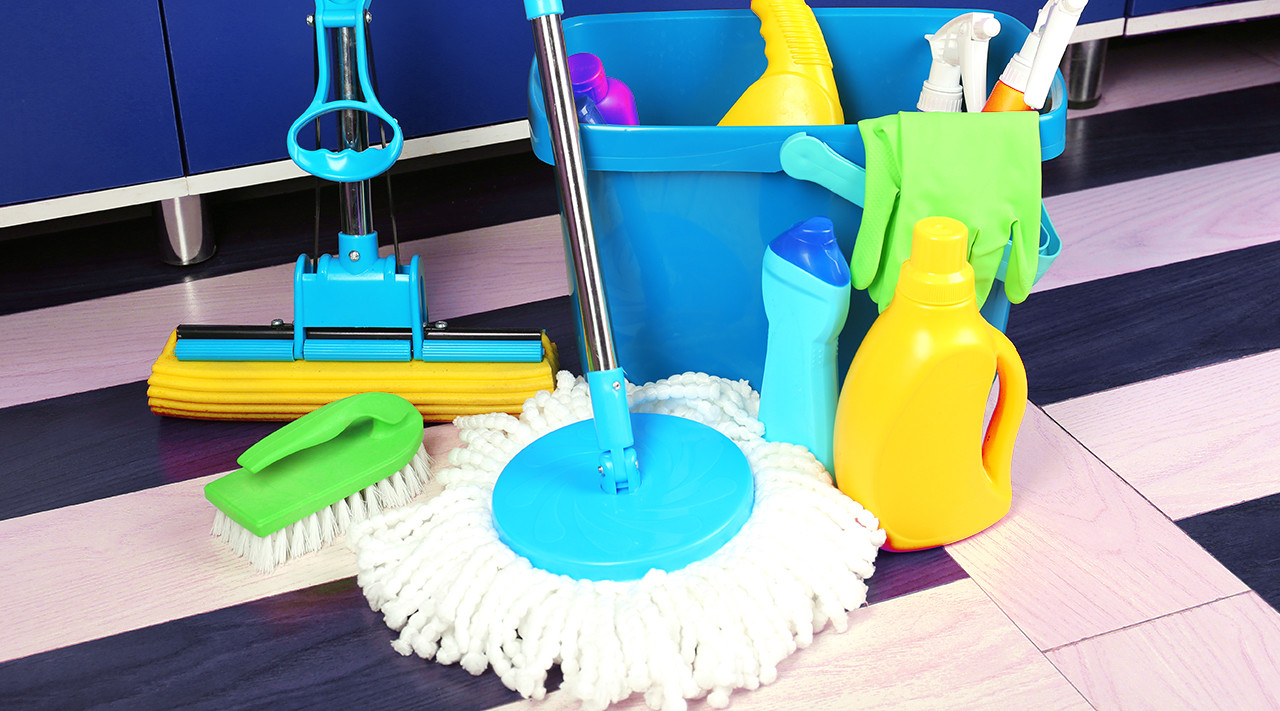Different Types of Mops Explained: Which is Best?
Choosing the right mop can make all the difference in keeping your floors spotless with minimal effort. From spin mops to steam mops, the world of mops is surprisingly diverse. In this guide, we'll explore the most popular types of mops, their unique benefits, and help you decide which one is best for your cleaning needs.
Introduction to Mops: A Cleaning Essential
Mops have come a long way from simple rags on sticks to advanced cleaning tools. Today, they are indispensable in homes and businesses for cleaning large surface areas efficiently. Whether you're dealing with hardwood, tile, or laminate floors, there's a mop designed to make your cleaning routine easier and more effective.
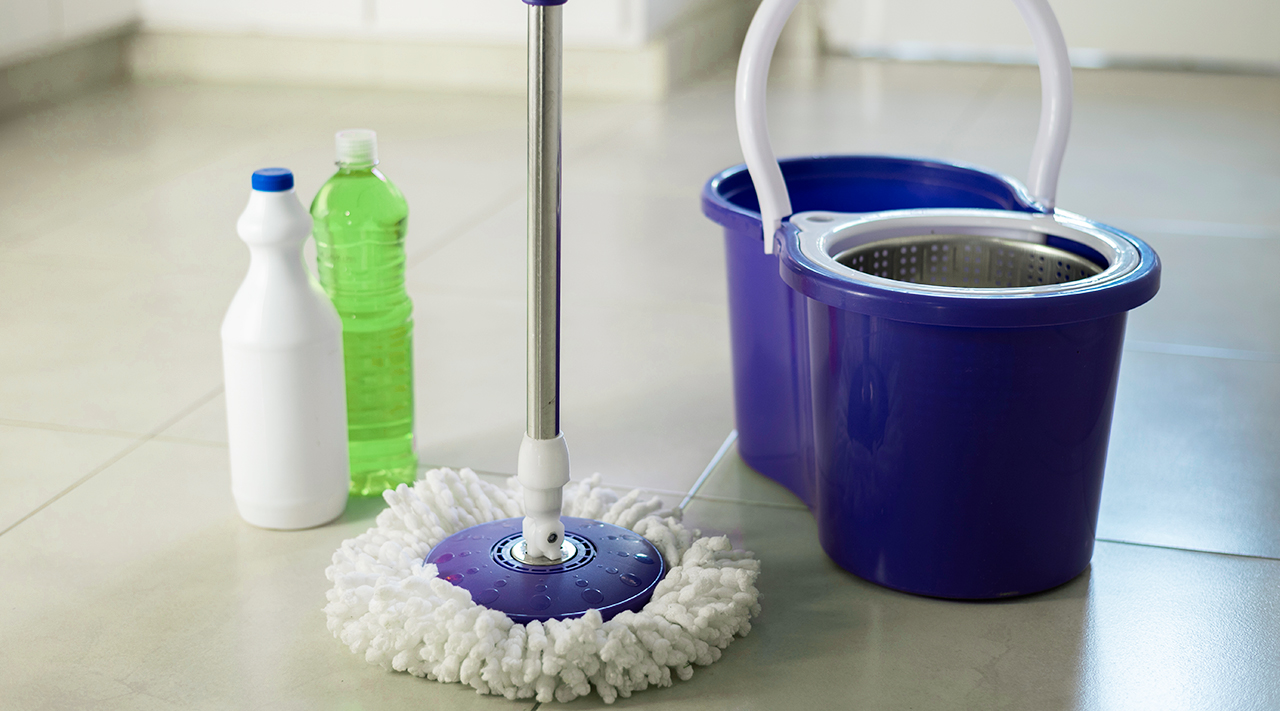
Understanding Different Mop Types
The market for different types of mops is booming, reflecting our growing interest in efficient and effective cleaning solutions. For instance, the US Manual Cleaning Mops Market was valued at $448.50 million in 2022 and is projected to reach $522.51 million by 2028, growing at a CAGR of 2.58%. This growth indicates that traditional mop types are still in high demand despite technological advancements.
Different types of mops cater to various cleaning scenarios and floor types. From the classic string mop to the modern spin mop, each type has its unique features and benefits. Understanding these differences can help you build a versatile cleaning arsenal.
1. Spin Mops: Effortless Wringing and Versatility
Spin mops have gained popularity for their easy wringing mechanism, which reduces manual effort. These mops are excellent for cleaning large areas quickly and are especially effective on tile and laminate floors. Spin mops are designed to remove excess water, leaving your floors to dry faster and reducing the risk of slips.
2. Flat Mops: The Modern Cleaning Choice
Flat mops are sleek and versatile, making them a favorite for quick daily cleaning. With their rectangular or trapezoidal heads, they provide excellent floor contact, ensuring efficient cleaning with each swipe. They are particularly well-suited for hardwood and laminate floors.
Curious how flat mops stack up against spin mops? Check out this comparison to find the best fit for your routine.
3. Steam Mops: Chemical-Free Deep Cleaning
For those who prefer a chemical-free cleaning method, steam mops are an excellent choice. These mops use hot steam to sanitize floors, effectively killing bacteria and loosening dirt. Steam mops are ideal for kitchens and bathrooms, where a deeper clean is often required.
4. Sponge Mops: Gentle Yet Effective
Sponge mops are perfect for delicate surfaces like hardwood and laminate. Their absorbent sponge heads make them ideal for soaking up spills and applying a gentle touch when needed. However, proper maintenance is crucial to prevent mold growth.
Still unsure if a sponge mop is the right fit? Compare sponge mops and string mops in this detailed guide.
5. String Mops: The Traditional Workhorse
String mops are a classic choice, known for their high absorbency and ability to tackle tough messes. They're particularly effective on textured surfaces and large areas, making them a staple in both commercial and residential cleaning.
6. Dust Mops: Keeping It Dust-Free
Dust mops are designed to attract and hold dust, making them perfect for maintaining a dust-free home. They're versatile and can be used on various surfaces, from floors to ceiling fans. Dust mops are especially useful for quick clean-ups between deeper cleaning sessions.
Specialty Mops: Beyond the Basics
As cleaning technology advances, we're seeing an exciting array of specialty mops that go beyond the basic cleaning functions. These innovative tools are designed to tackle specific cleaning challenges or to incorporate cutting-edge features that make the cleaning process more efficient and effective.
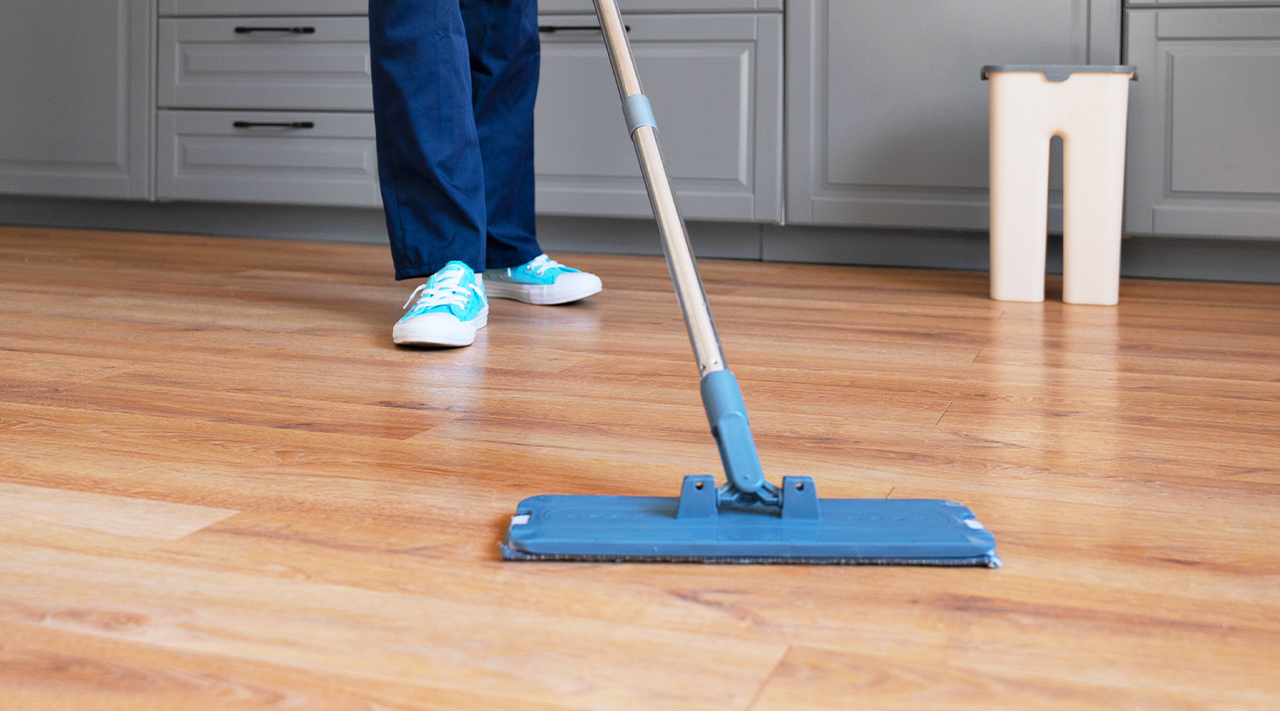
Spin Mops: Effortless Wringing and Versatility
Spin mops have become a popular choice for their convenient wringing mechanism and versatile cleaning capabilities. These mops feature a built-in spinning system, often operated by a foot pedal or hand press, that allows you to wring out excess water without bending down or using your hands. This makes them ideal for those looking to reduce effort and maintain control over moisture levels while cleaning.
Spin mops typically have a round, microfiber mop head that provides excellent absorbency and effective dirt removal. The microfiber material not only traps dust and debris but also works well on various surfaces, from hardwood and tile to laminate. The 360-degree swivel design enables easy maneuvering around furniture and into tight spaces, making it a versatile tool for everyday cleaning.
One of the key advantages of spin mops is the ability to control how wet or dry the mop head is, thanks to the spinning mechanism. This flexibility allows you to clean delicate surfaces with minimal water or tackle stubborn stains with a damp mop head, ensuring optimal results on different floor types.
Most spin mop sets come with a two-compartment bucket for washing and wringing, simplifying the cleaning process. Some models even include features like splash guards and wheels for added convenience. However, while spin mops are excellent for regular maintenance, they may not be as effective for heavy-duty scrubbing tasks.
Spin mops offer a user-friendly and efficient solution for everyday cleaning. Their innovative design, combined with ease of use and versatility, makes them a valuable addition to any cleaning routine. Whether you need to clean up small spills or give your floors a thorough wipe-down, a spin mop is a practical tool that delivers consistent results with minimal effort.
Flat Mops: The Modern Choice
When it comes to mop types, flat mops have emerged as a popular modern choice for homeowners and cleaning professionals alike. These sleek, low-profile mops offer a range of benefits that make them stand out in the crowded world of cleaning tools.
Flat mops typically feature a rectangular or trapezoidal head with a flat surface, usually covered with microfiber or disposable pads. This design allows for excellent floor contact, ensuring efficient cleaning with each swipe. The flat shape also makes it easy to maneuver under furniture and into corners, reaching areas that traditional mops might miss.
Microfiber flat mops, in particular, are gaining popularity due to their superior cleaning ability and eco-friendly nature. The microfiber material is highly effective at trapping dirt, dust, and even bacteria, making it an excellent choice for those concerned about hygiene. Additionally, microfiber mops often require less water and cleaning solution, making them a more sustainable option.
Another advantage of flat mops is their ease of use. Many models come with a built-in wringing mechanism, allowing you to clean and wring out the mop without getting your hands dirty. This feature not only makes the cleaning process more hygienic but also saves time and effort.
Flat mops are also known for their quick-drying properties. The thin, flat design allows for better air circulation, which means the mop head dries faster after use. This quick-drying feature helps prevent the growth of mold and bacteria, keeping your cleaning tools fresher for longer.
For those who prefer disposable options, many flat mops come with compatible disposable pads. These can be particularly useful for tackling tough messes or when you need a quick clean without the hassle of washing a reusable pad.
While flat mops excel in many areas, they may not be the best choice for heavy-duty cleaning or extremely large spaces. In such cases, traditional string mops or more specialized tools might be more appropriate. However, for everyday cleaning and maintenance, flat mops offer an efficient, user-friendly solution that has rightfully earned its place as a modern cleaning staple.
Flat mops represent a significant evolution in mop types, offering a blend of efficiency, versatility, and ease of use. Whether you're looking to streamline your cleaning routine or upgrade your cleaning tools, a flat mop is certainly worth considering. Its modern design and impressive cleaning capabilities make it a valuable addition to any cleaning arsenal.
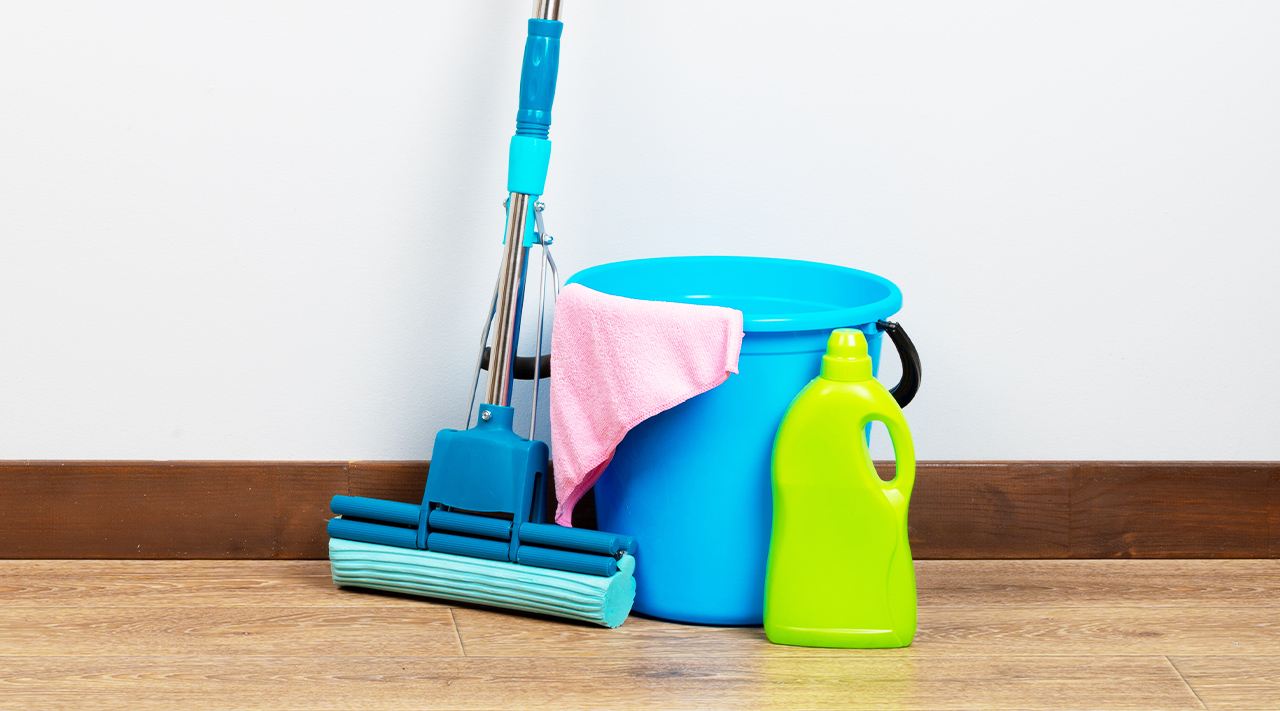
Sponge Mops: For Delicate Surfaces
When it comes to cleaning delicate surfaces, sponge mops are often the go-to choice for many homeowners and cleaning professionals. These versatile tools combine the absorbency of a sponge with the convenience of a mop, making them ideal for a variety of cleaning tasks, especially on surfaces that require a gentler touch.
Sponge mops typically feature a rectangular sponge head attached to a long handle. The sponge material is designed to be highly absorbent, allowing it to soak up spills and dirty water effectively. This absorbency also means that sponge mops can hold a significant amount of cleaning solution, which can be beneficial when tackling larger areas or stubborn stains.
One of the primary advantages of sponge mops is their ability to clean without scratching. This makes them particularly well-suited for delicate flooring materials such as:
• Laminate surfaces
• Marble tiles
• Linoleum
The soft, pliable nature of the sponge allows it to conform to slight irregularities in the floor surface, ensuring a thorough cleaning without causing damage.
Many sponge mops come with a built-in wringer mechanism, which allows you to easily squeeze out excess water from the sponge head. This feature is crucial for controlling the amount of moisture applied to your floors, especially important when cleaning water-sensitive surfaces like hardwood.
While sponge mops excel at gentle cleaning, they also can apply more pressure when needed. This makes them effective for scrubbing away tougher stains or dirt buildup, particularly on textured surfaces where other mop types might struggle to reach.
It's worth noting that sponge mops do have some limitations. They may not be as durable as some other mop types and might need replacing more frequently, especially if used for heavy-duty cleaning tasks. Additionally, the sponge material can harbor bacteria if not properly cleaned and dried after use, so proper maintenance is essential.
For more tips on choosing the right tools and products, check out our guide on the best commercial cleaning supplies for sparkling results.
To get the most out of your sponge mop:
- Rinse the sponge head thoroughly after each use
- Allow it to dry completely between uses to prevent mold growth
- Replace the sponge head regularly to maintain optimal cleaning performance
In conclusion, sponge mops offer a unique combination of gentleness and effectiveness, making them an excellent choice for cleaning delicate surfaces. While they may require a bit more maintenance than some other mop types, their versatility and ability to clean without causing damage make them a valuable addition to any cleaning toolkit.
Whether you're dealing with delicate hardwood floors or simply prefer the absorbent nature of a sponge, this mop type is certainly worth considering for your cleaning needs.

String Mops: The Traditional Workhorse
When it comes to the various types of mops available, string mops stand out as the tried-and-true workhorses of the cleaning world. These classic tools have been a staple in homes, businesses, and institutions for generations, and for good reason. Their simple yet effective design makes them a go-to choice for tackling a wide range of cleaning tasks.
String mops, also known as cotton mops or yarn mops, consist of long strands of absorbent material attached to a mop head. This design allows them to cover large areas quickly and efficiently, making them ideal for cleaning expansive floors in schools, hospitals, and commercial spaces. However, they're equally at home in residential settings, particularly for deep cleaning sessions or dealing with significant spills.
One of the key advantages of string mops is their exceptional absorbency. The numerous strands can hold a substantial amount of water or cleaning solution, allowing you to clean larger areas before needing to re-wet the mop. This high absorbency also makes string mops excellent for soaking up spills or excess water, a feature that sets them apart from many other types of mops.
String mops excel at deep cleaning due to their ability to agitate dirt and grime effectively. The individual strands can work their way into crevices and textured surfaces, dislodging stubborn dirt that other mops might miss. This makes them particularly useful for cleaning uneven surfaces like textured tile or grouted floors.
While string mops are versatile, they do have some considerations to keep in mind:
- Weight: When wet, string mops can become quite heavy, which may be challenging for some users.
- Drying time: The dense strands can take longer to dry than other mop types, requiring proper care to prevent mildew.
- Lint: Some lower-quality string mops may leave behind lint, especially when new.
To get the most out of your string mop:
• Use a mop bucket with a wringer to control moisture levels and make the cleaning process more efficient.
• Rinse the mop head thoroughly after use and allow it to dry completely between uses.
• Replace the mop head when it becomes frayed or discolored to maintain optimal cleaning performance.
Despite the emergence of newer mop designs, string mops remain a popular choice among cleaning professionals and homeowners alike. Their durability, effectiveness, and ability to handle tough cleaning jobs make them a reliable option in the diverse world of mop types.
In conclusion, while there are many innovative types of mops on the market today, the traditional string mop continues to prove its worth as a versatile and effective cleaning tool. Whether you're tackling a large commercial space or giving your home a thorough clean, a string mop can be a valuable addition to your cleaning arsenal. Its time-tested design and proven effectiveness make it a true workhorse in the world of floor cleaning.
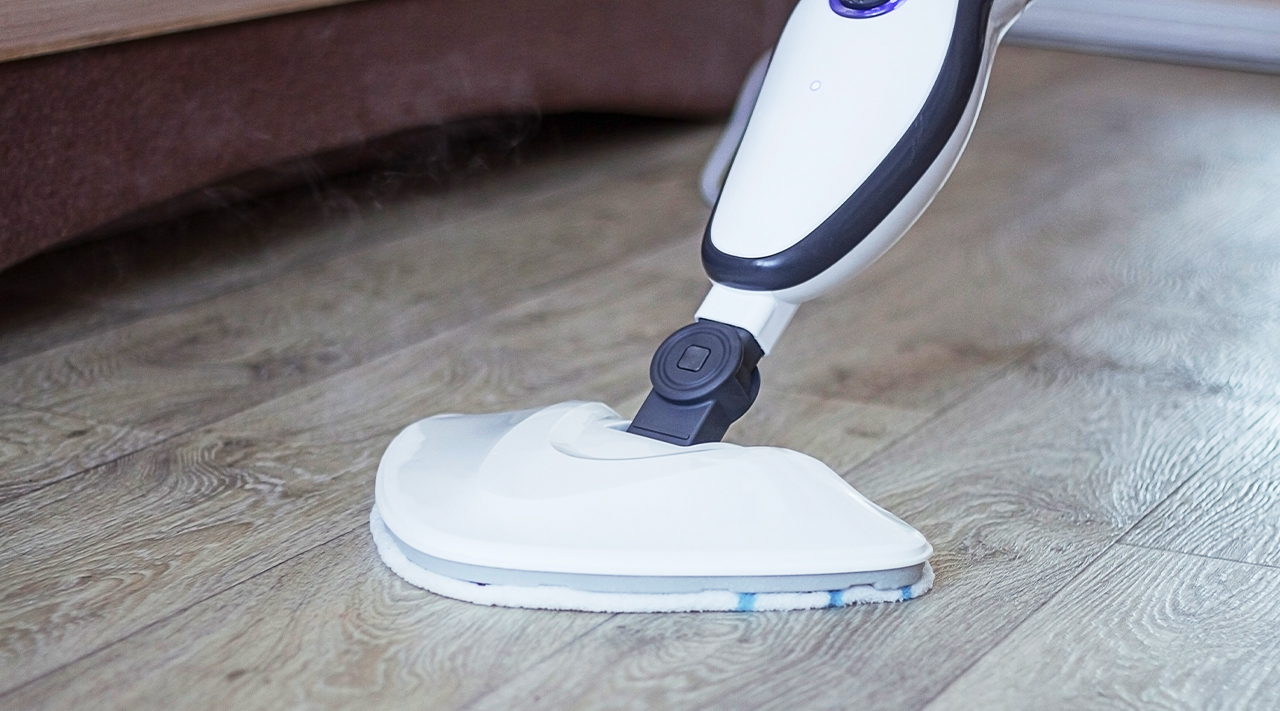
Steam Mops: Chemical-Free Cleaning
In the ever-evolving world of floor cleaning technology, steam mops have emerged as a powerful and eco-friendly solution. These innovative devices harness the power of hot steam to clean and sanitize floors without the need for harsh chemicals, making them an attractive option for those seeking a more natural approach to household cleaning.
Steam mops work by heating water to extremely high temperatures, typically around 200°F (93°C), and then releasing the resulting steam through a microfiber pad onto the floor surface. This hot steam effectively loosens dirt, grime, and even stubborn stains, allowing the microfiber pad to easily wipe them away.
One of the primary advantages of steam mops is their ability to clean and sanitize simultaneously. The high-temperature steam can kill up to 99.9% of bacteria and other microorganisms, providing a deep clean that goes beyond mere surface-level tidying. This makes steam mops particularly useful in households with young children, pets, or individuals with allergies or sensitivities to cleaning chemicals.
The chemical-free nature of steam cleaning offers several benefits:
Environmental friendliness: No harmful chemicals are released into the environment.
Cost-effectiveness: You save money on purchasing cleaning solutions.
Safety: Reduced risk of chemical exposure for humans and pets.
Versatility: Many steam mops can be used on various floor types, including hardwood, tile, and sealed stone.
While steam mops are incredibly effective, they do have some limitations. They may not be suitable for unsealed wood floors or certain types of vinyl, as the heat and moisture could potentially cause damage. It's always best to check the manufacturer's recommendations for your specific flooring type before using a steam mop.
To get the most out of your steam mop:
Always sweep or vacuum the floor before steam cleaning to remove loose debris.
Use distilled water to prevent mineral buildup in the mop's reservoir.
Replace the microfiber pads regularly to maintain optimal cleaning performance.
Allow the floor to dry completely after steam cleaning to prevent any potential slip hazards.
Steam mops are particularly effective for tackling tough, sticky messes in kitchens and bathrooms. The hot steam can easily cut through grease and soap scum, leaving your floors sparkling clean without the need for scrubbing or harsh chemicals.
For those with allergies or sensitivities to traditional cleaning products, steam mops offer a welcome alternative. The chemical-free cleaning process eliminates the risk of irritation from cleaning solution residues, making it easier to maintain a healthy home environment.
In conclusion, steam mops represent a significant advancement in floor cleaning technology. By harnessing the power of hot steam, these devices offer a chemical-free, efficient, and hygienic way to keep your floors clean. While they may not be suitable for every flooring type, steam mops are an excellent choice for those seeking an eco-friendly and effective cleaning solution. Whether you're looking to reduce your environmental impact, save money on cleaning supplies, or simply achieve a deeper clean, a steam mop could be the perfect addition to your cleaning arsenal.
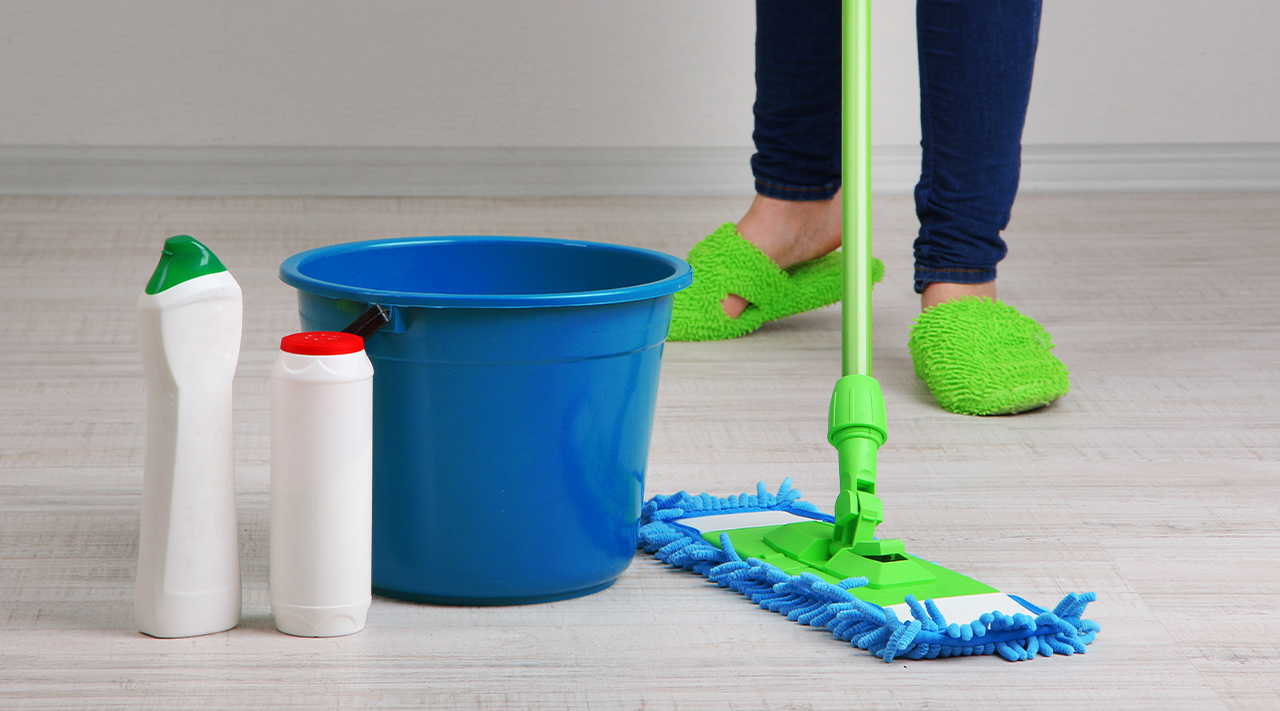
Dust Mops: Keeping It Dust-Free
When it comes to maintaining a clean and healthy home and work environment, dust mops play a crucial role in keeping surfaces free from dust, dirt, and debris. These specialized cleaning tools are designed to efficiently capture and remove dust particles, making them an essential part of any cleaning routine.
Dust mops typically feature a long, flat head covered with a material that attracts and holds onto dust. This design allows them to cover large areas quickly and effectively, making them ideal for both residential and commercial spaces. The materials used for dust mop heads can vary, including microfiber, cotton, or synthetic blends, each offering unique benefits in terms of dust collection and durability.
One of the key advantages of dust mops is their versatility. They can be used on a wide range of surfaces, including:
• Hardwood floors
• Tile and linoleum
• Laminate flooring
• Baseboards and walls
• Ceiling fans and light fixtures
This versatility makes dust mops an excellent tool for both floor cleaning and general dusting tasks around the home or office.
Dust mops are particularly effective at capturing fine particles that vacuum cleaners might miss. The static charge generated by some dust mop materials helps attract and hold onto dust, ensuring a thorough clean with each pass. This makes them especially useful for people with allergies or respiratory sensitivities, as they can help reduce airborne allergens in the home.
For optimal dust-free results, consider these tips when using a dust mop:
- Start from the farthest corner of the room and work your way toward the exit to avoid tracking over areas you've already cleaned.
- Use slow, deliberate movements to allow the mop to pick up as much dust as possible.
- Shake out or vacuum the mop head regularly during use to prevent dust from being spread around.
- Clean or replace the mop head frequently to maintain its dust-trapping effectiveness.
Many modern dust mops come with reusable, machine-washable heads, making them an eco-friendly choice for regular cleaning. This feature not only reduces waste but also ensures that you always have a clean mop head ready for use.
In addition to their practical benefits, dust mops can also be a time-saver in your cleaning routine. Their ability to quickly cover large areas means you can maintain a dust-free environment with minimal effort, freeing up time for other tasks or activities.
While dust mops excel at dry cleaning, they're not suitable for wet spills or deep cleaning. For these situations, you'll need to turn to other types of mops or cleaning tools. However, for regular maintenance and keeping your space dust-free, a quality dust mop is hard to beat.
In conclusion, dust mops are an invaluable tool for maintaining a clean, dust-free environment. Their efficiency in capturing fine particles, versatility across various surfaces, and ease of use make them a must-have in any cleaning arsenal. Whether you're tackling daily dust buildup or preparing for a deep clean, a dust mop can help you achieve a cleaner, healthier living or working space with minimal effort.
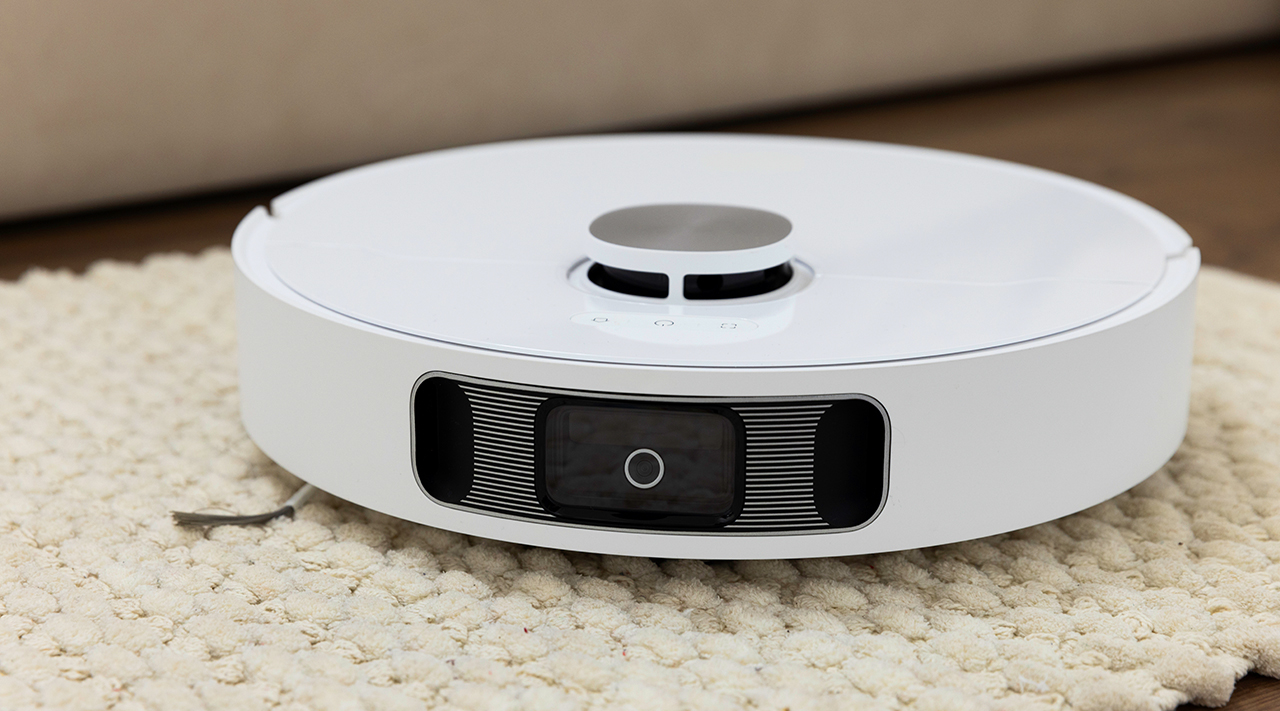
Specialty Mops: Beyond the Basics
As cleaning technology advances, we're seeing an exciting array of specialty mops that go beyond the basic cleaning functions. These innovative tools are designed to tackle specific cleaning challenges or to incorporate cutting-edge features that make the cleaning process more efficient and effective.
One of the most intriguing developments in the world of specialty mops is the emergence of smart and connected mops.
Smart tile floor mops equipped with sensors, Wi-Fi connectivity, and automation features are stimulating market demand. These high-tech cleaning tools can map out your floor plan, automatically adjust cleaning patterns, and even send notifications to your smartphone when the cleaning is complete. While they may seem like something out of a sci-fi movie, these smart mops are becoming increasingly popular in both residential and commercial settings.
Industrial mops represent another category of specialty cleaning tools. These heavy-duty mops are designed to handle the toughest cleaning jobs in commercial and industrial environments. Industrial mops often feature more durable materials, larger cleaning heads, and enhanced ergonomic designs to improve efficiency and reduce user fatigue during extended cleaning sessions. They're essential for maintaining cleanliness and safety in factories, warehouses, and other large-scale facilities.
The rise of eco-friendly cleaning solutions has also influenced the specialty mop market.
Consumers are increasingly seeking floor mops made from sustainable materials and those that have a minimal environmental impact. This trend has led to the development of mops made from recycled materials, biodegradable cleaning pads, and designs that reduce water and chemical usage.
Spin mops have carved out their niche in the specialty mop market. These innovative tools feature a spinning mechanism that allows for easy wringing and faster drying times. Interestingly, the store-based segment dominated the spin mop market with a share of around 68.8% in 2022, but internet retailers are expected to expand sales. This shift in distribution channels reflects the changing shopping habits of consumers and the growing popularity of online purchasing for cleaning supplies.
Other specialty mops worth mentioning include:
- Microfiber mops with interchangeable pads for different surfaces
- Steam mops with adjustable steam settings for various cleaning needs
- Robotic mops that can clean autonomously
- Disposable mop systems, like Swiffer Sweeper, for healthcare and food service industries
These specialty mops offer unique solutions for specific cleaning challenges, making them valuable additions to any comprehensive cleaning toolkit.
In conclusion, the world of specialty mops is diverse and ever-evolving. From high-tech smart mops to eco-friendly options and industrial-strength cleaners, there's a specialty mop for almost every cleaning need. As technology continues to advance and consumer preferences shift towards more sustainable and efficient cleaning solutions, we can expect to see even more innovative specialty mops in the future. Whether you're a homeowner looking for the latest in cleaning technology or a facility manager seeking industrial-grade cleaning power, exploring the world of specialty mops can lead you to the perfect tool for your specific cleaning needs.
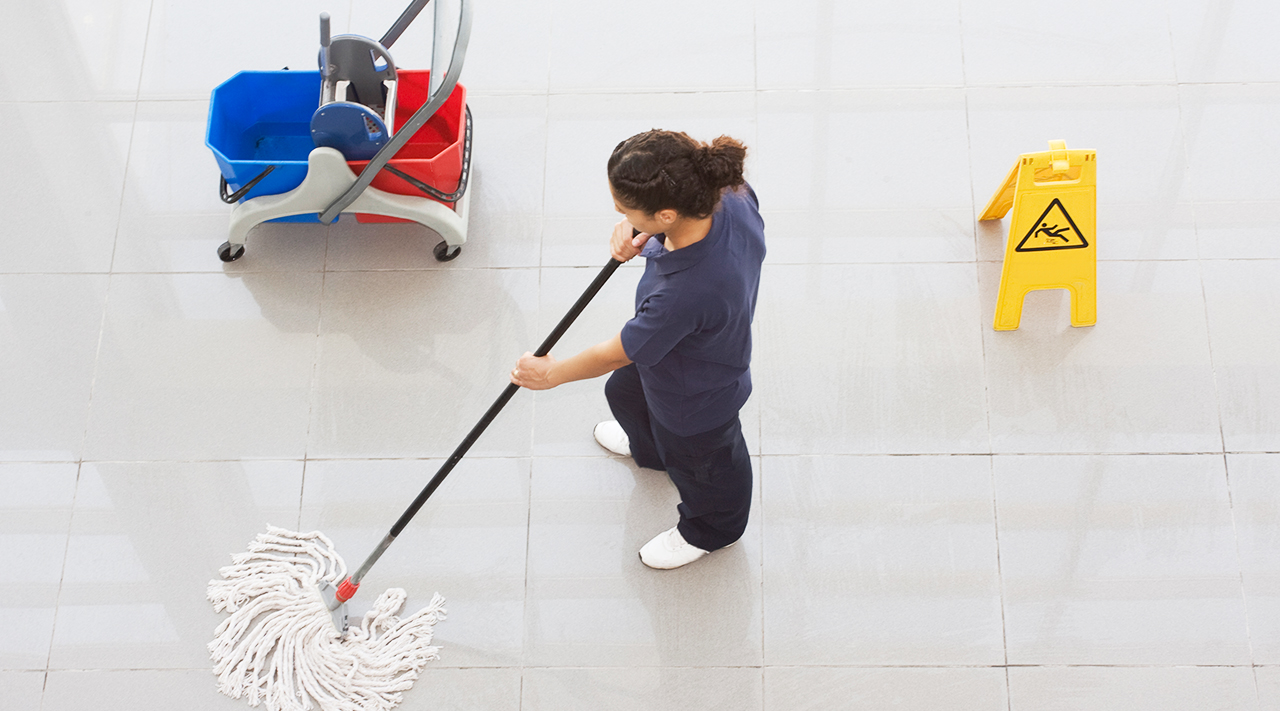
Maintenance, Care, and Replacement Tips
Keeping your mop clean and well-maintained is crucial for effective cleaning and longevity of the tool. A clean mop not only performs better but also helps maintain a hygienic environment in your home or workplace. Let's explore some essential tips for maintaining, caring for, and knowing when to replace your mop.
- Regular Cleaning: After each use, rinse your mop thoroughly with clean water to remove dirt and debris. For a deeper clean, soak the mop head in a mixture of warm water and mild detergent for about 15 minutes. Rinse well and allow it to air dry completely before storing. This practice is particularly important as growing awareness of cleanliness and hygiene is a key driver in the cleaning mops market.
- Proper Storage: Store your mop in a well-ventilated area to prevent mold and mildew growth. Hang it up or store it with the mop head facing upwards to allow for proper air circulation. Avoid storing a damp mop in enclosed spaces.
- Disinfecting: Periodically disinfect your mop head to eliminate bacteria and germs. You can do this by soaking it in a solution of one part white vinegar to three parts water for about 15 minutes. Rinse thoroughly and allow to dry completely.
- Mop Head Replacement: Even with proper care, mop heads will eventually wear out. Replace your mop head when you notice fraying, discoloration, or a persistent odor that doesn't go away after cleaning. For most households, replacing the mop head every 2-3 months is a good rule of thumb.
- Handle Care: Don't forget about the mop handle! Wipe it down regularly with a disinfectant solution to keep it clean and germ-free. Check for any loose parts or damage and tighten or replace them as necessary.
- Material-Specific Care: Different mop materials require specific care. For instance: Microfiber mops: Avoid using fabric softeners when washing, as they can reduce the material's effectiveness.
- Cotton mops: These can be machine-washed but should be air-dried to prevent shrinkage.
- Sponge mops: Squeeze out excess water after each use and allow to dry completely to prevent mold growth.
- Bucket Maintenance: Don't forget about your mop bucket! Clean and disinfect it regularly to prevent the buildup of bacteria and unpleasant odors.
It's worth noting that the residential sector dominates the cleaning mops market due to an increased focus on maintaining clean and sanitized homes. This trend underscores the importance of proper mop maintenance in household settings.
- Eco-Friendly Practices: Consider using environmentally friendly cleaning solutions and reusable mop heads when possible. This not only reduces waste but also aligns with the growing trend towards sustainable cleaning practices.
- Professional Cleaning: For industrial or commercial settings, consider professional cleaning services for your mops periodically. They can provide deep cleaning and sanitization that may be difficult to achieve at home.
- Replacement Schedule: Keep track of when you last replaced your mop head and set reminders for regular replacements. This ensures you're always cleaning with an effective tool.
By following these maintenance, care, and replacement tips, you can ensure that your mop remains a clean, effective, and hygienic cleaning tool. Remember, a well-maintained mop not only cleans better but also lasts longer, saving you time and money in the long run. Whether you're maintaining a spotless home or managing a commercial space, these practices will help you get the most out of your cleaning mops.
Selecting the Right Mop for Your Needs
As we've explored the diverse world of mops, it's clear that there's no one-size-fits-all solution when it comes to floor cleaning. The best mop for you will depend on your specific needs, floor type, and cleaning preferences. However, armed with the knowledge from this guide, you're now better equipped to make an informed decision.
When searching for the best cleaning floor mop, consider the following factors:
- Floor Type: Different floors require different cleaning approaches. The best floor cleaning mop for hardwood might not be ideal for tile or laminate.
- Frequency of Use: If you clean daily, you might prefer a lightweight, easy-to-use option. For less frequent, deeper cleans, a more robust mop might be suitable.
- Ease of Maintenance: Look for a mop that's easy to clean and maintain. The best floor mop cleaner should not only clean your floors effectively but also be simple to keep in good condition.
- Versatility: The best mop to clean the floor should be able to handle various cleaning tasks, from light dusting to tackling stubborn stains.
- Eco-friendliness: Consider mops with reusable pads or those that require minimal chemical use for a more sustainable cleaning routine.
- Budget: While it's tempting to go for the cheapest option, investing in a quality mop can save you money in the long run through better cleaning performance and durability.
Remember, the best mop is ultimately the one that meets your specific needs and makes your cleaning routine easier and more effective. Whether you opt for a traditional string mop, a modern microfiber flat mop, or a high-tech steam mop, the key is to choose a tool that you'll use regularly and maintain properly.
Don't be afraid to experiment with different types of mops to find your perfect match. You might even find that a combination of mops works best for your home, using different tools for different areas or cleaning tasks.
In conclusion, the world of mops is vast and varied, offering solutions for every cleaning challenge. By considering your specific needs and the features of different mop types, you can select the best mop that will keep your floors sparkling clean with minimal effort.
Recent Posts
-
Fragrance-Free vs Scented: Build an Allergy-Safe Cleaning Program that Still Works
When "Clean" Becomes a Complaint You know the scene: your custodial team disinfects the office overn …Dec 05, 2025 -
How to Prevent Slippery Floors After Disinfecting: Custodian Safety Guide
When Clean Turns Dangerous You've just finished disinfecting the lobby floor. It's spotless. Germ-fr …Nov 28, 2025 -
Sensitive Skin Cleaning: Low Irritant Disinfectants, Gloves, and Hand Care Stations
Facility managers often report that skin irritation ranks among the top three health complaints from …Nov 14, 2025

